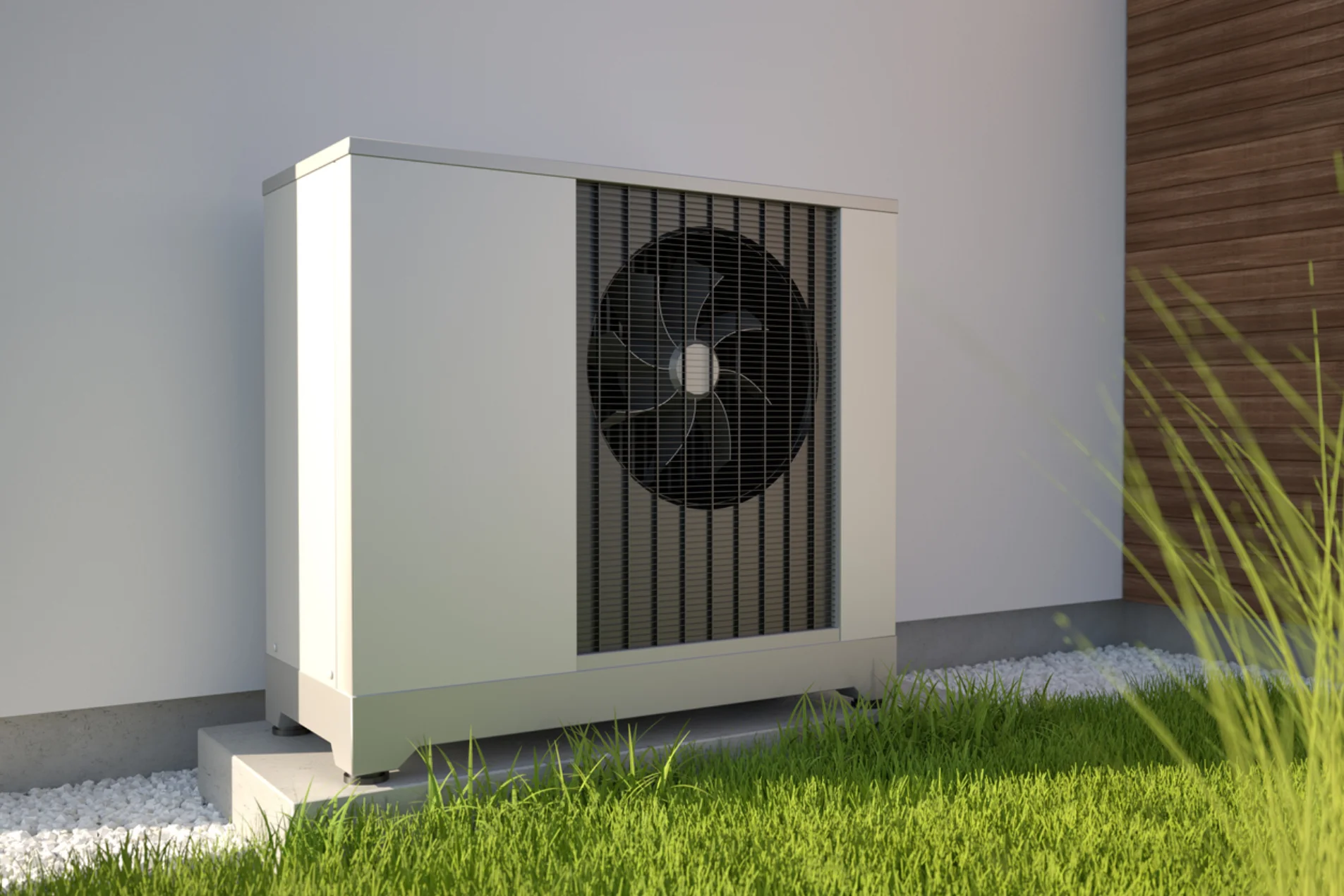Heating and Heat Pumps
For every unit of electricity used to power a heat pump, up to 3 to 5 units of heat can be made available. Heat pump installations can also be certified under the Microgeneration Certification Scheme (MCS) to allow end users and building operators to qualify for UK government grants and incentives.
Heat Pump Installers
Synchronised Power provides a complete project management service for heat pump installations including surveys, design, installation and maintenance. Our heat pumps are installed by manufacturer certified engineers to ensure full coverage under the manufacturer’s warranty.
Air Source Heat Pump (ASHP) Installers
Air source heat pumps help to transfer heat from the outside air into a building. There are two types of air source heat pump including:
- Air-to-Air Heat Pumps: provides warm air and is the principle for heating from most air conditioning systems.
- Air-to-Water Heat Pumps: exchanges heat into water that is then circulated through building radiators, fan coils and underfloor heating.
Air-to-water heat pumps have a high seasonal Co-efficient of Performance (sCOP) at 3:1 meaning that for every 1kW of electrical power input, the heat pump can have generated 3kW of heat output. This type of heat pump can also work at below zero temperatures (typically as low as -20°C) and provide up to 80°C of heat. Heat pumps can be grouped into:
- High Temperature Heat Pumps: high temperature heat pumps that work at 65-80°C and use refrigerant that boils at 55° An outdoor unit collects and passes the air across a refrigerant filled coil. When the temperature is as low as -15°C up to 40°C of heat energy can be provided. This is then taken to a second heat exchanger with another refrigerant which boils at -40°C allowing up to 80°C of heat to be transferred to the water system and distributed around the building or to the heating coil of a hot water cylinder. Standard radiators can be used as there is no difference in the flow temperature between a heat pump and a conventional boiler. In case of failure, a typical heat pump can also incorporate a 6kW backup heater.
- Low Temperature (LT) Air Source Heat Pumps: these are more flexible for smaller building heating and extra heat form the outside air and raise this to a higher temperature. Due to the technology used, 75% of the heat generated from a low temperature heat pump comes from the air which is a renewable energy source.
Low temperature air source heat pimps are three-to-five more efficient than traditional heating systems using fossil fuels and electricity and have minimal maintenance requirements. The air pumps operate from 25-50°C. Key to their efficient operation is to ensure that all the associated heat emitters are correctly sized to ensure they provide enough heat to overcome losses.
The radiators used with a low temperature air source heat pump will feel warm and should not be scolding hot making them safer for environments with children or the elderly. For optimal performance an under-floor or fan-coil heating system is recommended. Low temperature air source heat pumps can be used in conjunction with other renewable technologies including solar thermal panels.
Air Source Heat Pump Operation
Air source heat pumps capture thermal energy in the air, the majority of which comes from the sun warming our atmosphere and the outer layer of the earth’s crust. In one year the sun emits 50 times more energy than the total energy consumed on earth.
Heat pumps are electrically powered and are highly energy efficient devices. They only need one heat source, the outside air, two heat exchanges (one to absorb and one to release heat). The heat pump extracts energy and increases its temperature and then released it into a medium such as the water running into radiators, underfloor heating or fan coils.
An essential part of a heat pump is its compressor. As the refrigerant passes through the evaporator and extracts heat, it is compressed into a gas. As the gas is compressed its temperature rises. The second heat exchanger acts as a condenser and as it is at a lower temperature the gas releases its heat.
Heat Pump Installations in North Wales
Please contact the Renewable Energy Supplies for your heat pump installation. We can provide a site survey, proposal including finance and payback calculations, installation and maintenance contracts for North Wales’s domestic, commercial and industrial installations. We have installer engineers across North Wales covering Anglesey (Bangor depot), Clwyd, Conwy (Llandudno depot), Denbighshire (Prestatyn depot), Flintshire (Mold depot), Gwynedd and Wrexham borough counties.
